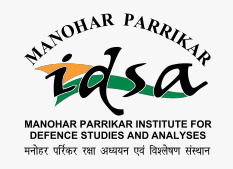How India Can Direct its ‘Act East’ Policy Toward Myanmar
September 2, 2016
India’s ‘Act East’ policy has received a momentous push with recent incoming and outgoing visits by the high level delegations. Indian President Pranab Mukherjee visited Brunei and Thailand in February and New Zealand and Papua New Guinea in April. In July, Minister of State for External Affairs V K Singh visited Laos to attend the ASEAN-India Summit and Mekong-Ganga Cooperation Finance Ministers meeting. In August, External Affairs Minister Sushma Swaraj paid a one day visit to Naypyidaw, the capital of Myanmar. Prime Minister Narendra Modi is moreover set to visit Vietnam en route to China for the G20 Summit this weekend.
At the same time, India has received several dignitaries from the region as well. In June, the prime minister of Thailand, General Prayut Chan-o-cha visited India. Dato’ Seri Dr. Ahmad Zahid Bin Hamidi, the deputy prime minister of Malaysia, came to India in July. The most recent addition to this list was the visit by U Htin Kyaw, the president of Myanmar, to India in the last week of August.
Myanmar holds a special position in India’s neighborhood vis-à-vis the ‘Act East’ policy. Besides being its closest Southeast Asian neighbor, Myanmar’s importance in India’s foreign policy is marked by its long porous international border with Northeast India, India’s quest for connectivity with East Asia, India’s search for alternative sources of energy, and its economic linkages with the region. Traditionally, India and Myanmar have not shared any extraordinary relationship, at least never one as special as the ties Myanmar and China for the last few decades. However, with the renewed emphasis on India’s ‘Act East’ policy, the bilateral relations between these two countries are now expected to gain some credentials.
India-Myanmar Ties
During the recent visit, President U Htin Kyaw’s delegation signed four memorandums of understanding (MoUs) with their Indian counterparts. Two of the MoUs deal with the India-Myanmar-Thailand Trilateral Highway; of the other two, one focuses on renewable energy and one on traditional medicines. India has promised to help Myanmar in repairing the Kalewa-Yarggyi road segment and constructing or upgrading 69 bridges on the Tamu-Kyigone-Kalewa section of the Trilateral Highway. India may have larger plans for the project as well. At the recent MGC meeting, Minister V K Singh spoke about reaching Laos, Vietnam, and Cambodia through the Trilateral Highway.
Modi, in his welcoming address to U Htin Kyaw, spoke about the early completion of the Kaladan Multimodal Transit and Transport project and the India-Myanmar-Thailand Trilateral Highway. The current delays in these projects are already awkward for the stakeholder countries.
The China Factor
Myanmar’s Foreign Affairs Minister and State Councillor Daw Aung Saan Suu Kyi paid a visit to China in the third week of August and China’s Global Times reported that she has made positive gestures toward the Chinese leadership. As the leader of Myanmar’s pro-democracy forces, Suu Kyi had earlier objected to Chinese investments in Myanmar, but as many have noted, in her new role, she is now redesigning her calculations toward China. In fact, under her leadership, Myanmar has formed a high-level committee to examine the suspended Chinese hydropower project in Myitsone.
Given this context, India needs to show pragmatic enthusiasm toward the new government in Myanmar. Though Suu Kyi is believed to have close emotional ties with India, thanks to her childhood days in Delhi, as Myanmar’s foreign minister she prioritized China over India in her travel schedule and this says a lot about Myanmar’s neighborhood preferences. Chinese investments in Myanmar and its two-way trade with the country are huge in comparison to India’s trade and investment in Myanmar. Despite quite a few initiatives, India-Myanmar bilateral trade stood at roughly $2 billion in 2014-15; on the other hand, China, being the largest trading partner of Myanmar, enjoyed bilateral trade worth $25 billion in 2013-14.
In October, Aung San Suu Kyi is expected to visit India for the outreach summit of BRICS and BIMSTEC. This will be her first visit to India in the capacity of Myanmar’s foreign minister and state counselor. During Sushma Swaraj’s visit, Suu Kyi pledged that Myanmar would not allow any terrorist activities from its soil against India. This positivity needs to be continued. It is essential that both countries uphold their assurances to each other to define a proper shape for the future of their relations.
Sampa Kundu is a researcher at the Institute for Defence Studies and Analyses, New Delhi. She works on Southeast Asia, ASEAN, India’s Act East Policy and Myanmar.
The article was originally published in The Diplomat.



